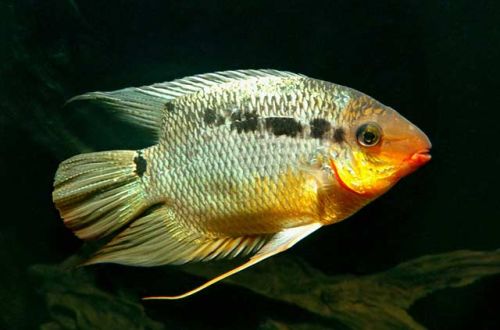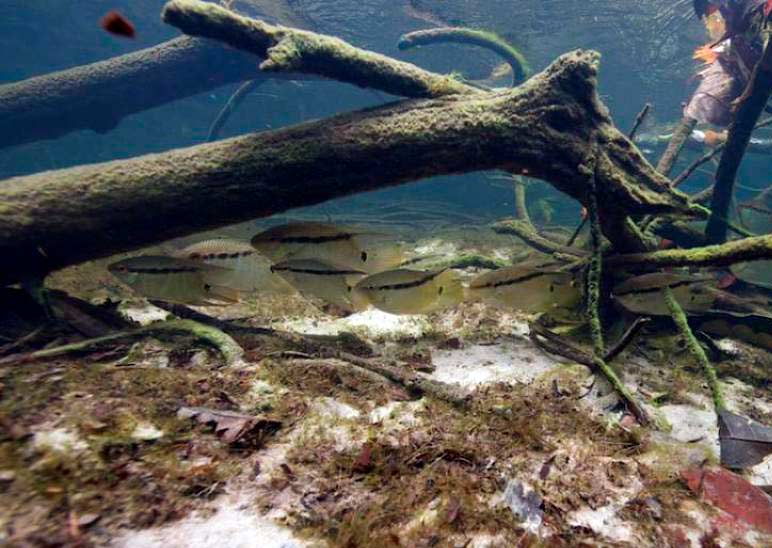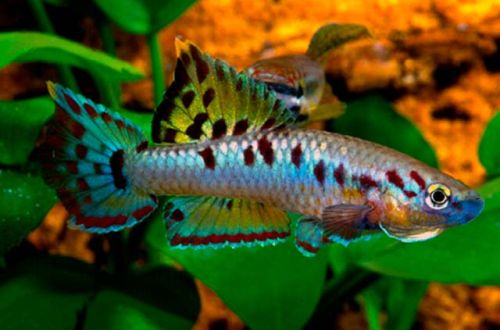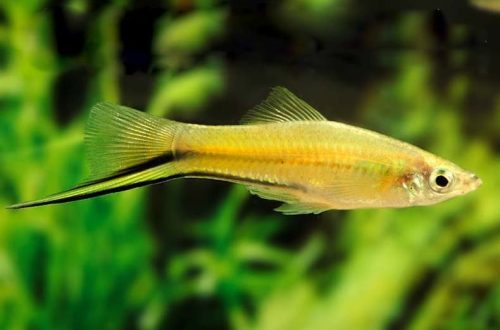
Mesonouta extraordinary
Mesonaut unusual, scientific name Mesonauta insignis, belongs to the family Cichlidae (Cichlids). The fish is native to South America. It occurs in the basins of the Rio Negro and Orinoco rivers in Colombia, Venezuela and the northern regions of Brazil. Inhabits areas of rivers with dense aquatic vegetation.

Contents
Description
Adults reach a length of about 10 cm. The fish has a high body and extended dorsal and anal fins. The pelvic fins are elongated and terminate in thin filaments. The coloration is silvery with a gray back and a yellow belly. A characteristic feature of the species is a black diagonal stripe stretching from the head to the end of the dorsal fin. The band is dark spots merged into a line, which in some cases can be clearly seen.

Outwardly, it is almost identical to the mesonaut cichlazoma, for this reason both species are often supplied to aquariums under the same name.
It is worth noting that in the modern scientific classification the genus Mesonauta does not belong to the true Cichlazoma, but the name is still used in the aquarium fish trade.
Behavior and Compatibility
Peaceful calm fish, gets along well with most aquarium species of comparable size. Compatible fish include small South American cichlids (apistograms, geophagus), barbs, tetras, small catfish such as corridors, etc.
It is noted that during the breeding season they may show some aggression towards their tankmates in an attempt to protect their offspring.
Brief information:
- The volume of the aquarium – from 80 liters.
- Temperature – 26-30°C
- Value pH — 5.0–7.0
- Water hardness – soft to medium hard (1-10 gH)
- Substrate type – sand / gravel
- Lighting – moderate
- Brackish water – no
- Water movement – light or moderate
- The size of the fish is about 10 cm.
- Food – any food
- Temperament – peaceful
- Content alone, in pairs or in a group
Maintenance and care, arrangement of the aquarium
The optimal size of the aquarium for a pair of fish starts from 80-100 liters. It is recommended to recreate a shaded habitat with subdued lighting levels, an abundance of aquatic vegetation, including floating ones. Natural driftwood and a layer of foliage at the bottom will give a natural look and become a source of tannins that give the water a brownish tint.
Tannins are an integral part of the aquatic environment in the biotope of Mesonauta uncommon, so their presence in the aquarium is acceptable.
For long-term housing, it is important to provide warm soft water and prevent the accumulation of organic waste (feed leftovers, excrement). To this end, it is necessary to replace part of the water with fresh water weekly, clean the aquarium and carry out equipment maintenance.
Food
Omnivorous species. Will accept most popular foods. It can be dry, frozen and live food of suitable size.
Breeding / breeding
Under favorable conditions, the male and female form a pair and lay up to 200 eggs, fixing them on some surface, for example, a flat stone. The incubation period is 2-3 days. Adult fish that have appeared are carefully transferred to a small hole dug in the vicinity. The fry spend another 3-4 days in a new place before they begin to swim freely. All this time, the male and female guard the offspring, driving away uninvited neighbors in the aquarium.





